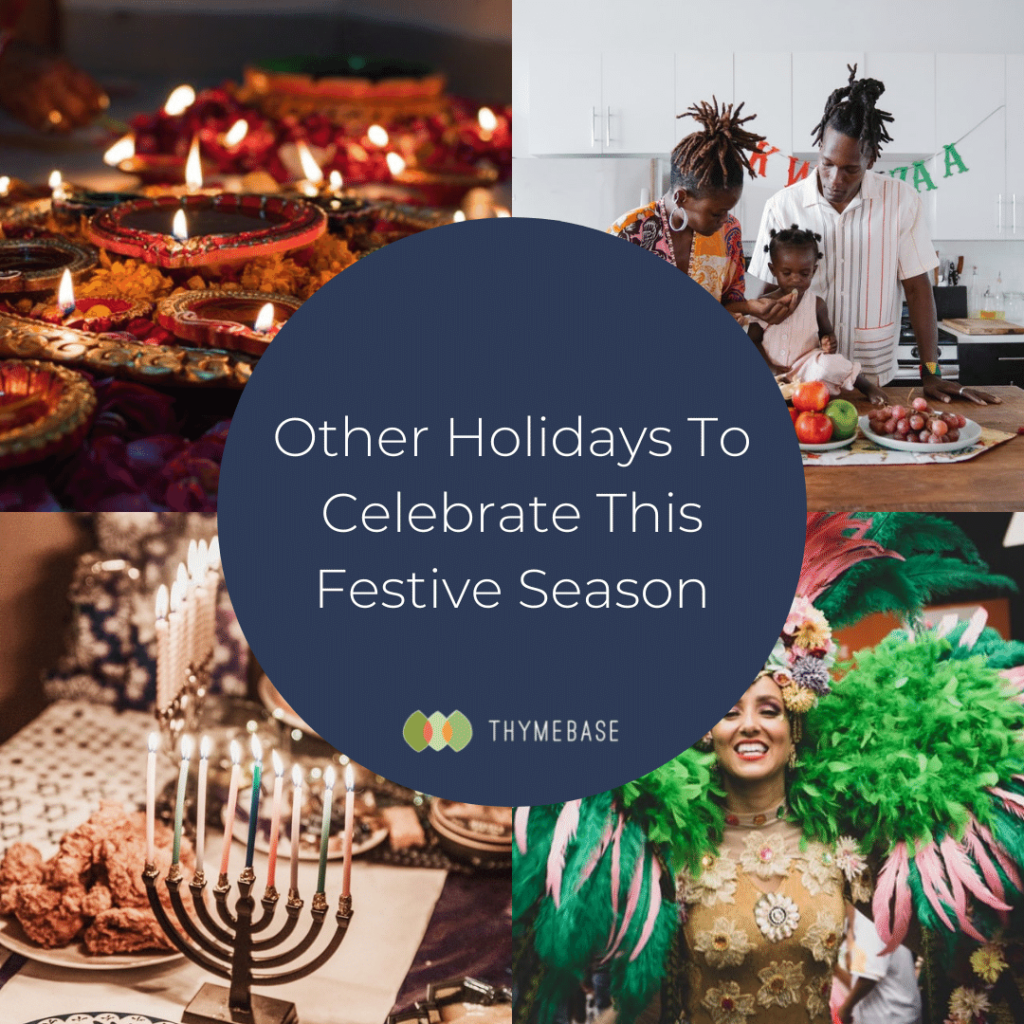There are other holidays to celebrate over fall and winter, so when planning festive season events, keep these wonderful holidays in mind.
The festive season is a time of celebratory events across the world. This is especially the case this year after spending the whole holiday season of last year in lockdown. A common misconception, however, is that the holiday season is synonymous with Christmas. And that all events during this time must have a Christmas-related theme, but this is simply not the case.
While Christmas is a major holiday in the western calendar, there is a plethora of other holidays and festivals celebrated worldwide by different cultures. Most importantly, they also share in the Christmas sentiment of giving and celebrating.
So, if you are looking for more reasons to plan events and get people together this holiday season, the below holidays and festivals should give you lots of ideas!
Related: Event Planning Across Cultures And Traditions
1. Diwali
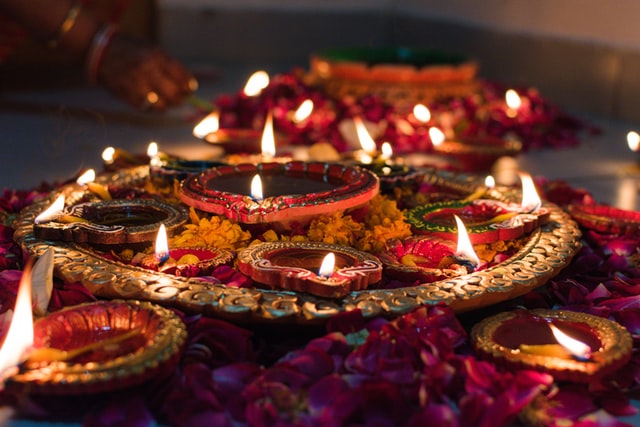
Also known as the Festival of Lights, this Hindu holiday is an international festival that opens the festive season. Diwali takes place in the Hindu month of Kartik, which is usually between October and November in the western calendar. This year, it takes place on the 4th of November. Conventionally, many people only celebrate the first day of Diwali. Still, this festival actually lasts for 5 days, giving event planners more time and the opportunity to create events around it. As it says in its name, Diwali is all about lights and using them to repel negativity.
These are some of the popular event themes to celebrate Diwali:
A Bollywood party
Invite your attendees to dress in their brightest and most elegant saris and other Indian dress, and roll out a long red carpet. For your entertainment, turn up the Bollywood music and have one or two dance-offs during the evening, and your guests will feel like movie stars!
A garden party
If you are in a warmer part of the world and looking to create an intimate Diwali event, a garden party is a great option. Spread diyas across your lawn – they’re symbols of bringing light into the dark in Hindi culture. Complement them with hanging fairy lights or recycled bulbs on the trees. Flowers such as marigolds (genda phool) and roses (gulaab) are very popular for Diwali. And you can also make paper flowers using recycled paper if you want to go the eco-friendly route. Think about adding sentiment to your entertainment, like bringing in a soulful Hindistani band or a mehndi artist to decorate your attendees’ hands. And don’t forget about the food.
Casino Night
Most Diwali parties are filled with card games. You can turn this up a notch by recreating a casino setting using creative card arrangements and having red, white, and black as your theme colors. For your games, include Indian classics like Teen Patti, Rummy, and Kachufool. Add a little bit of competition, and you will have your guests “gambling” the night away in your bright Diwali casino.
2. Kwanzaa

Kwanzaa is an African-American festival that celebrates community and the fruits of being productive throughout the year. This holiday has been on a steady rise since 1966, when it was first celebrated in the U.S. Kwanzaa starts on the 26th of December, which is also Boxing Day on the western calendar, and carries on till the 1st of January. It culminates in a communal feast on the 6th day of the festival called Karamu. However, many smaller Kwanzaa events can be held during the 7 days of the festival. These events can be based on any of the festival’s seven pillars: unity, self-determination, collective work, cooperative economics, purpose, creativity, and faith.
These are some of the popular options:
A candle-lighting party
A candle is lit for each of the seven pillars of Kwanzaa called Nguzo Saba in Swahili. Each guest can have a chance to light a candle of their choice between the black, red, and green Kwanzaa colors and say what they are grateful for from the year. This could be a dinner party or a slightly bigger gathering such as an evening garden party.
Ujima party
Ujima is the collective work pillar. In this gathering, guests usually do something as a team, like preparing a meal or baking a cake. Alternatively, attendees can also bring their favorite dishes to share or go on a food drive and share food with the less fortunate in the community.
Book swapping party
Education and heritage are also important in the celebration of Kwanzaa and can be marked with book parties. A Kwanzaa book party can be a traditional book swap. Or you could plan a workshop where attendees make their own books. This can be particularly special for a children’s party. You supply the children with stationery and give them themes to make their own books.
3. Hanukkah
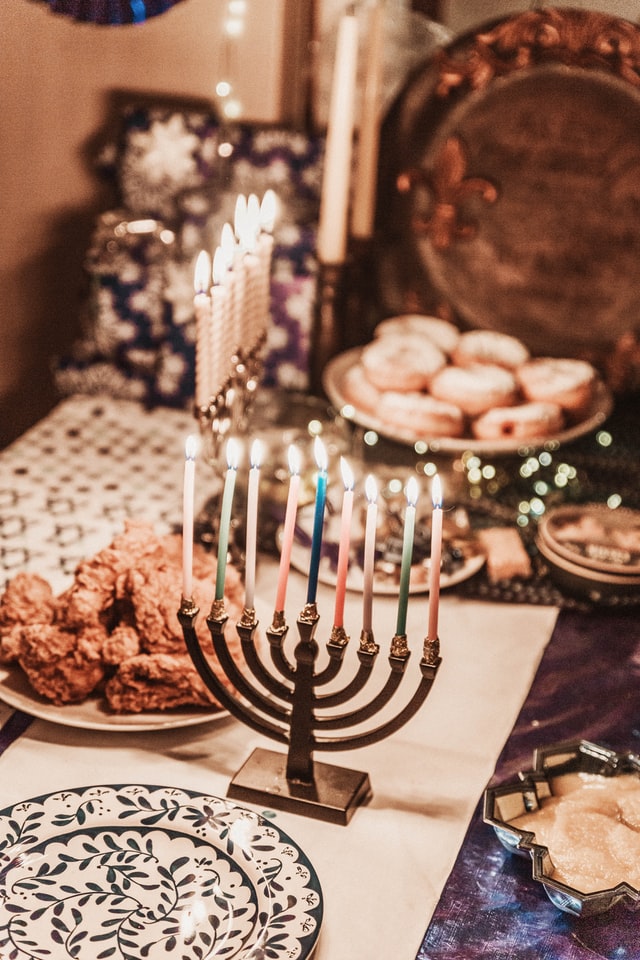
Hanukkah is a Jewish festival that is also known as the Festival of Lights. Hanukkah celebrates the recovery of Jerusalem and the rededication of the Second Temple. It is celebrated over 8 nights in the Hebrew month of Kislev, and this year, Hannukah is on the 24th of November. It ends on the 6th of December. Celebrations usually include lighting the candles on the menorah, eating traditional Hannukah food, games, and gift-giving.
Ugly sweaters party
Hanukkah parties are usually intimate and hosted in people’s homes. An ugly sweaters party can translate easily into a playful and inclusive Hanukkah celebration. Invite your attendees to wear their ugliest knit sweaters. Make sure to emphasize that these must be Hanukkah sweaters and not the old reindeer sweaters! You could also extend your theme to include ugly PJ’s and everyone will adhere to your dress code.
A latke party
You can also celebrate by cooking traditional Hanukkah foods like latkes with your guests. To make it more fun, divide everyone into teams and see who can whip up the best version or do it in the least amount of time. You can have them make latkes, or sufganiyot, although the dough of these jelly doughnuts does take a few hours to rise (meaning you may need to prepare it before your guests arrive). An easier option would be having your guests bake Hanukkah cookies or letting them decorate ready-made ones.
A Hanukkah game night
You can also treat your guests to a night of Hannukah-themed games like a Dreidel drinking game. Alternatively, you can have your guests play a conventional game with a Jewish twist like poker with chocolate gelts instead of money.
4. Yule (or Winter Solstice)
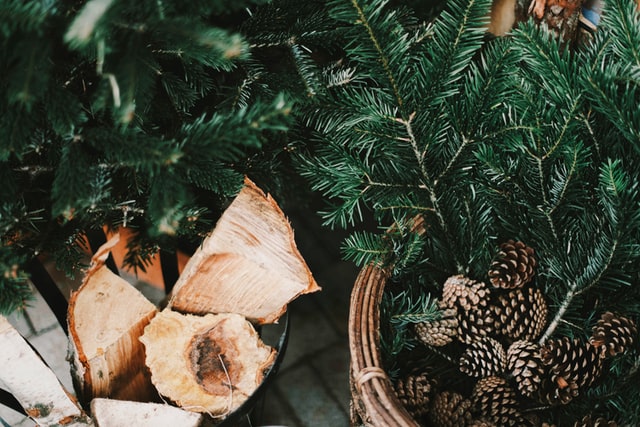
Yule is a pagan celebration of the winter solstice. It celebrates the midwinter when the days start to get longer, marking the “return of the sun.” Yule 2021 begins on the 21st of December and ends on the 1st of January. This holiday celebrates the weather conditions important to ancient peoples who spent most of their time outdoors. Therefore it is a perfect opportunity for festive events that celebrate nature.
A nature-based party
You can incorporate environmental awareness into your Yule celebration with evergreen decorations like ivy, yew, holly, pine, and mistletoe. These have beautiful Yule meanings. For example, yew represents reincarnation; holly and ivy are believed to eliminate negativity, while mistletoe brings abundance and fertility. This setting will work well with a sustainable and hearty winter menu.
A bonfire
Using a fire pit for a big bonfire is another traditional Yule celebration. You can decorate big oak logs with pinecones, dried berries, mistletoe, and cinnamon sticks and add cushions to some of these logs for your guests to sit on. You can have this at the beach or a park in your neighborhood. Think about entertainment that will help your attendees keep warm, like a lively folk band to keep everyone dancing. Just make sure to celebrate safely and check on local regulations.
A communal feast
Feasting is also important in Yule. You can recreate a good old pagan feast for your friends and family with a dinner party or a rustic barbecue. Have your guests share their wishes and resolutions for the new year to add a touch of sentiment to your feast.
5. Mardi Gras
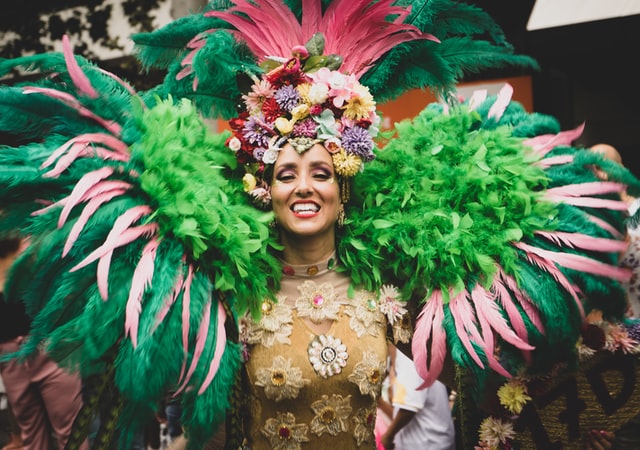
Mardi Gras, also known as “Fat Tuesday,” is all about the carnival celebrations before the Catholic Lenten period. Mardi Gras usually takes place in February or March, and in 2022, it is set for the 1st of March. Yes, it is still a long while away, but the magnitude of these carnival events needs serious planning and time. Think parades, music festivals, fireworks, and any other large entertainment. Here are some examples of failproof Mardi Gras themes.
A masquerade ball
A sense of mystery is at the heart of Mardi Gras carnivals. With all of us having had to wear masks these last two years, why not bring in a mysterious and fun take of the mask? Attendees can come in elaborate masks and make it a black-tie affair with glamorous purple and gold decor.
A French-style gathering
You can also borrow from the French culture as the Mardi Gras is believed to be of French origins. Use the French and Mardi Gras flags in your venue and serve a French menu or charcuterie boards if your event is for a smaller crowd.
A full-on carnival
A colorful evening of outrageous outfits and peacock feathers is the best Mardi Gras for a big crowd. To turn your venue into the ultimate party scene, use neon decorations and add beads and other jingling trinkets to the mix. Remember to give your attendees glow sticks!
A Festive Season For All
There are many reasons to have celebrations or sentimental events this festive season. All these other holidays can offer people a hiatus from the many Christmas or generic holiday celebrations they will attend. Remember, when planning your event, we are still in a pandemic, so you will need to determine your state or province’s gathering limit size and make sure your party is socially distanced.

